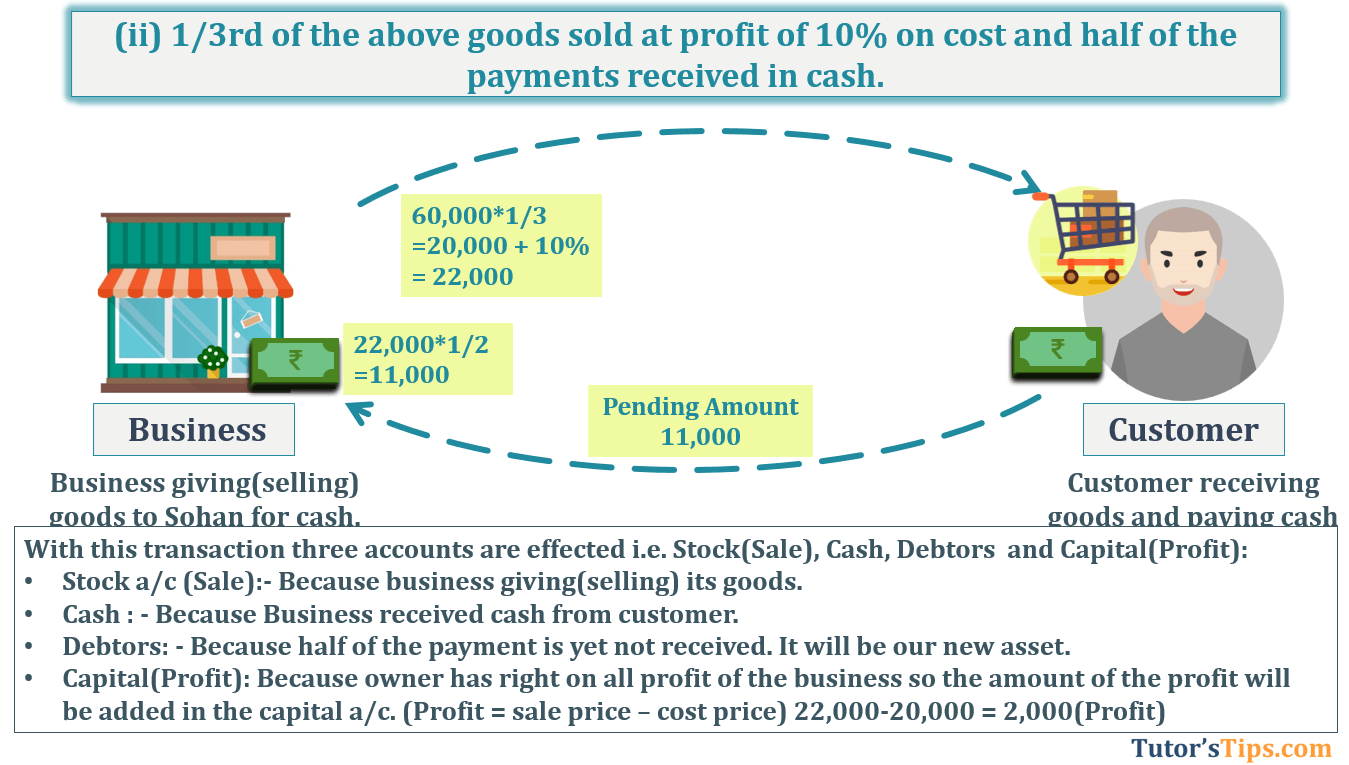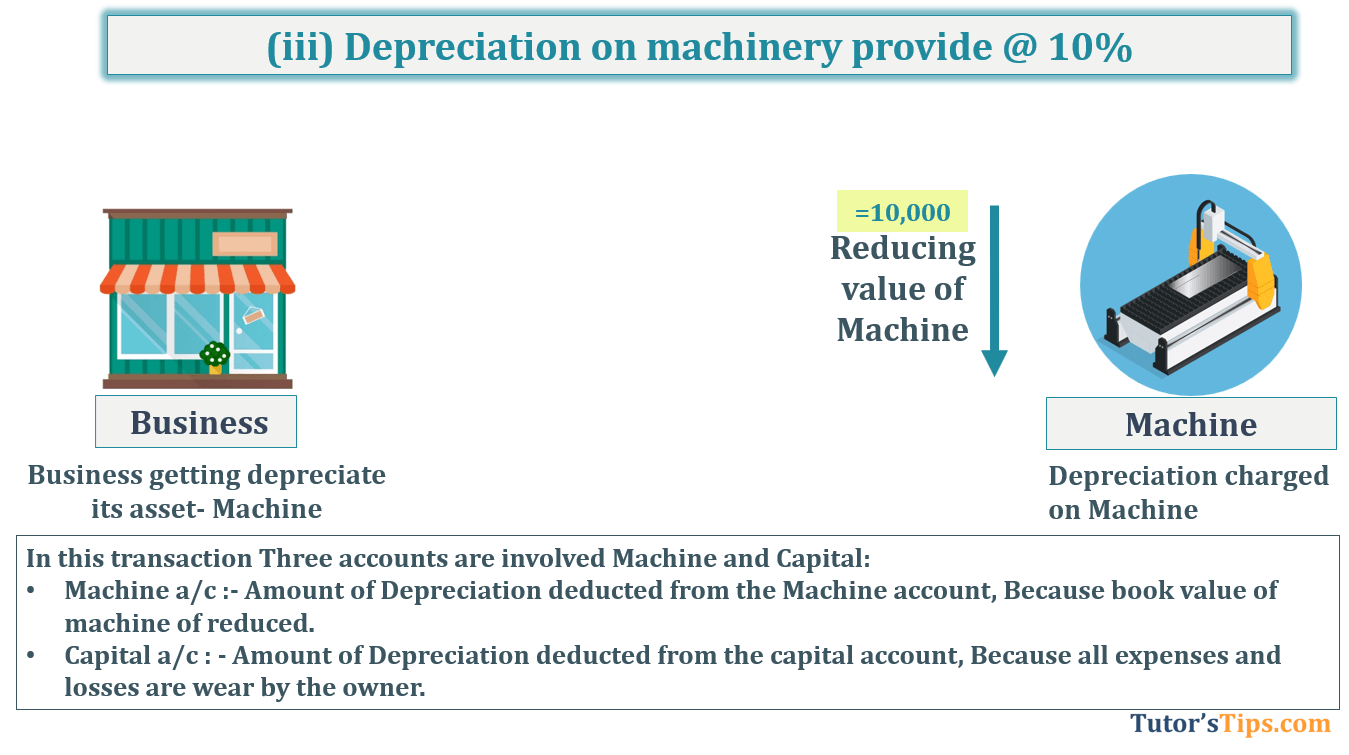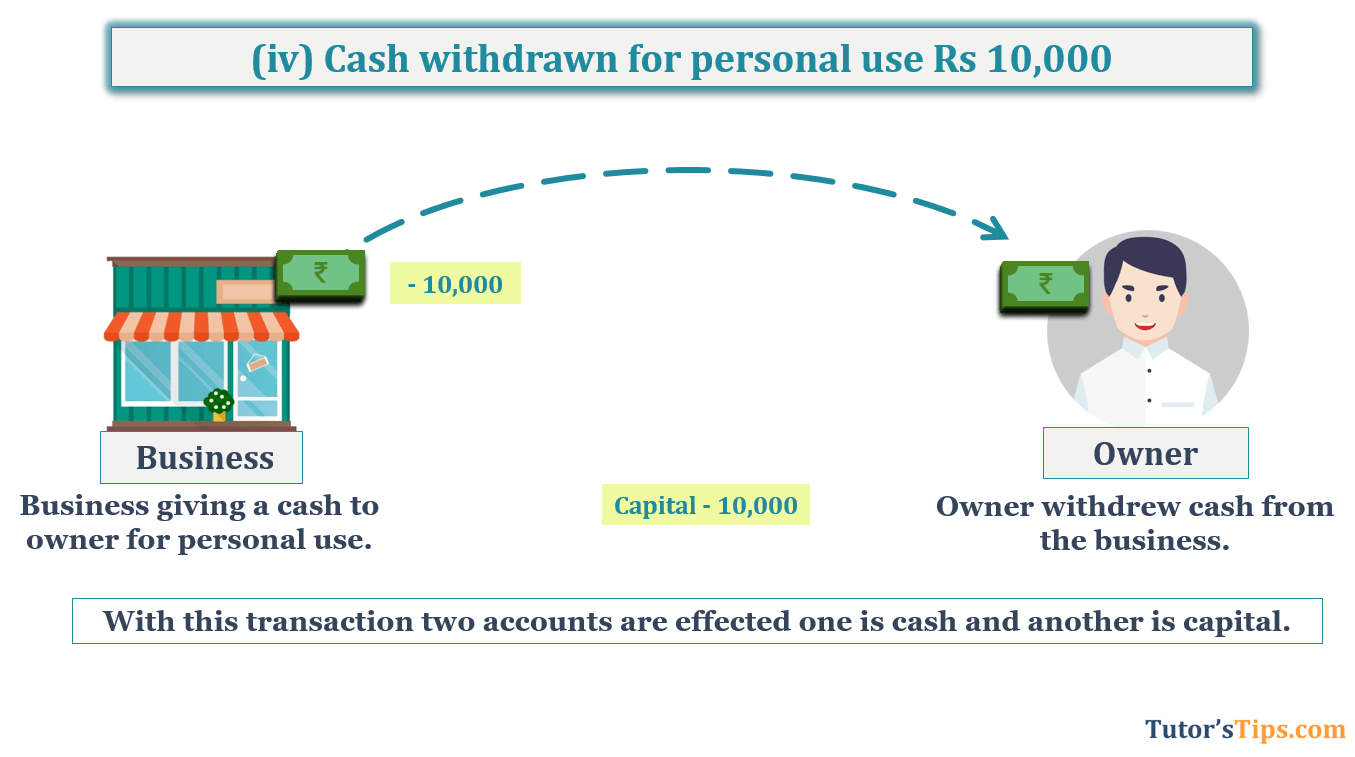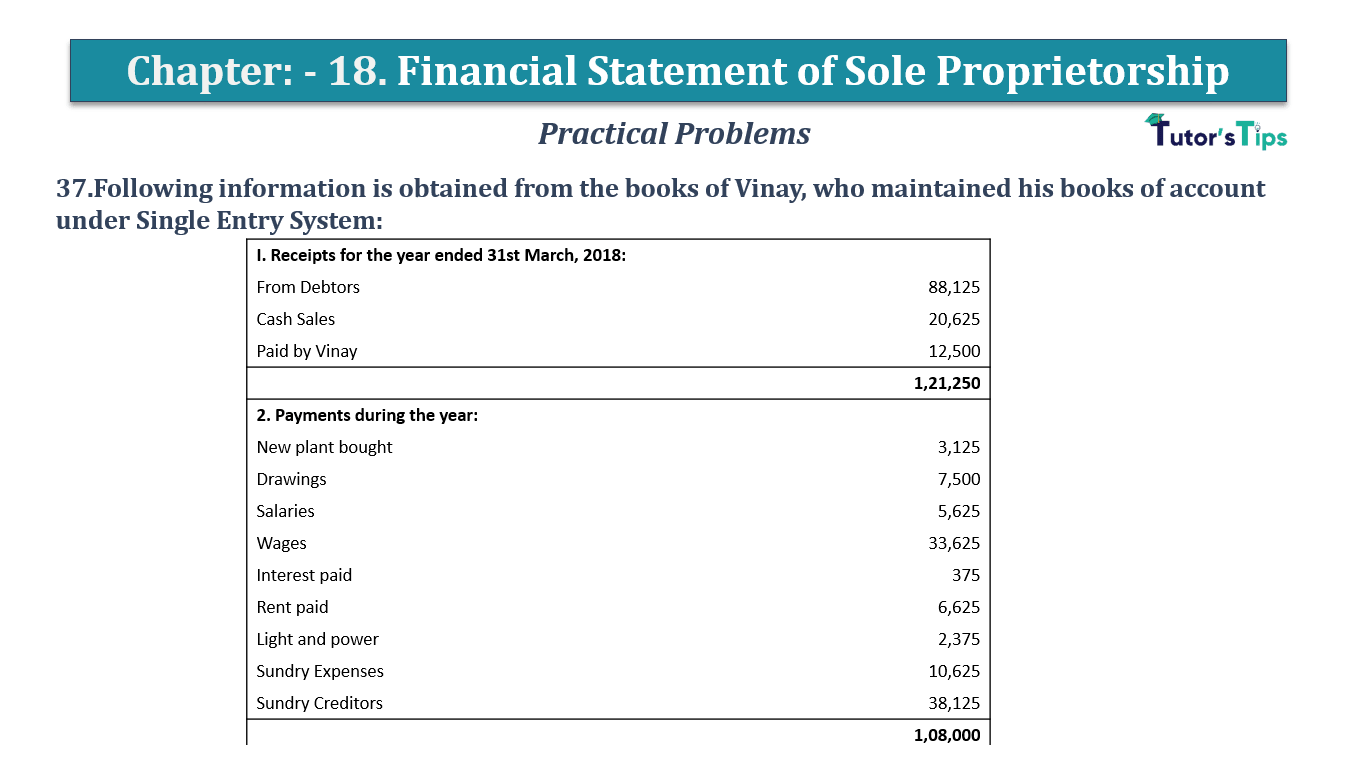Question No 16 Chapter No 5
16. Show an Accounting Equation for the following Transactions:
(i) D. Mahapatra Commenced business with cash Rs 50,000 and Rs. 1,00,000 by cheque, goods Rs 60,000 machinery Rs 1,00,000 and Furniture Rs 50,000.
(ii) 1/3rd of the above goods sold at a profit of 10% on cost and half of the payments received in cash.
(iii) Depreciation on machinery provide @ 10%
(iv) Cash withdrawn for personal use Rs 10,000
(v) Interest on drawings charged @ 5%
(vi) Goods sold to Gupta for Rs 10,000 and received a Bill receivable for the same amount for 3 months.
(vii) Received Rs 10,000 from Gupta against the bills Receivable on its maturity.
Solution of Question No 16 Chapter No 5: –
Subscribe our Youtube Channel
Note: “Becasue we less width so we have deleted column of Particulars but you have to make it in the paper or in your note book.”
| S. No. | Assets |
Liab. |
Capital | ||||||
| Cash | +Bank | +Stock | +Machi. | +Furn | +Debt. |
+B/R |
|||
| (i) | +50000 | +100000 | +60000 | +100000 | +50000 | +360000 | |||
| 50000 | +100000 | +60000 | +100000 | +50000 | – | – | – | +360000 | |
| (ii) | +11000 | – | -20000 | – | – | +11000 | +2000 | ||
| 61000 | +100000 | +40000 | +100000 | +50000 | +11000 | – | – | +362000 | |
| (iii) | – | – | – | -10000 | – | – | -10000 | ||
| 61000 | +100000 | +40000 | +90000 | +50000 | +11000 | – | – | +352000 | |
| (iv) | -10000 | – | – | – | – | – | -10000 | ||
| 51000 | +100000 | +40000 | +90000 | +50000 | +11000 | – | – | +342000 | |
| (v) | – | – | – | – | – | – |
-500 +500 |
||
| 51000 | +100000 | +40000 | +90000 | +50000 | +11000 | – | – | +342000 | |
| (vi) | – | – | -10000 | – | – | – | +10000 | ||
| 51000 | +100000 | +30000 | +90000 | +50000 | +11000 | +10000 | – | +342000 | |
| (vii) | +10000 | – | – | – | – | – | -10000 | – | – |
| 61000 | +100000 | +30000 | +90000 | +50000 | +11000 | – | – | +342000 | |
Answer: –
Assets: – Cash 61,000 + Bank 1,00,000 + Stock 30,000 + Machine 90,000 + Furniture 50,000 + Debtors 11,000 = 3,42,000/-
Liabilities: – 0/-
Capital = 3,42,000/-
Liabilities +Capital
0 + 3,42,000 = 3,42,000/-
Explanation of All Transactions with images: –
This is not a part of the solution, So you don’t have to write it in the exam. So why we explained if it is not needed. Because This explanation will help you to understand all transactions with logic so don’t need to remember all the transactions but just understand and remember the logic use behind it.
Transaction No. 1

As we discuss in the previous topic, A owner and a business both have a separate identity in the eye of law. So, the business will be treated as an Artificial Person and anything invested by the owner into the business will be treated as capital.
So, In this transaction, as shown in the above image owner investing her cash into the business, this will be treated as capital of the business. The business receiving assets i.e. cash, bank, stock, machine, and Furniture.
Transaction No. 2

In this transaction, as shown in the above image four accounts are involved i.e. Stock(Sale), Cash, Debtors and Capital(Profit):
- Stock a/c (Sale):- Because business giving(selling) its goods.
- Cash: – Because Business received cash from customer.
- Debtors: – Because half of the payment is yet not received. It will be our new asset.
- Capital(Profit): Because owner has right on all profit of the business so the amount of the profit will be added in the capital a/c. (Profit = sale price – cost price) 22,000-20,000 = 2,000(Profit)
Transaction No. 3

In this transaction, as shown in the above image two accounts are involved i.e. Machine and Capital:
Advertisement-X
- Machine a/c:- Amount of Depreciation deducted from the Machine account, Because book value of machine of reduced.
- Capital a/c: – Amount of Depreciation deducted from the capital account, Because all expenses and losses are worn by the owner.
Transaction No. 4

In this transaction, as shown in the above image two accounts are involved i.e. one is cash and another is capital.
- Cash a/c: – payment is made in cash.
- Capital a/c:- cash withdrawal by the owner
Transaction No. 5

In this transaction, as shown in the above image one accounts is involved for two times i.e. capital.
- Capital a/c: – addition in capital because business earned income.
- Capital a/c:- subtracted from capital because the owner has to pay this amount to a business.
Transaction No. 6

In this transaction, as shown in the above image one accounts is involved for two times i.e. capital.
- Capital a/c: – addition in capital because business earned income.
- Capital a/c:- subtracted from capital because the owner has to pay this amount to a business.
share with your friends
Comment if you have any questions.
T.S. Grewal’s Double Entry Book Keeping (Class +1) – Solution
- Chapter No. 1 – Introduction to Accounting
- Chapter No. 2 – Basic Accounting Terms
- Chapter No. 3 – Theory Base of Accounting, Accounting Standards and International Financial Reporting Standards(IFRS)
- Chapter No. 4 – Bases of Accounting
- Chapter No. 5 – Accounting Equation
- Chapter No. 6 – Accounting Procedures – Rules of Debit and Credit
- Goods and Services Tax(GST)
- Chapter No. 7 – Origin of Transactions – Source Documents and Preparation of Vouchers
- Chapter No. 8 – Journal
- Chapter No. 9 – Ledger
- Chapter No. 10 – Special Purpose Books I – Cash Book
- Chapter No. 11 – Special Purpose Books II – Other Books
- Chapter No. 12 – Bank Reconciliation Statement
- Chapter No. 13 – Trial Balance
- Chapter No. 14 – Depreciation
- Chapter No. 15 – Provisions and Reserves
- Chapter No. 16 – Accounting for Bills of Exchange
- Chapter No. 17 – Rectification of Errors
- Chapter No. 18 – Financial Statements of Sole Proprietorship
- Chapter No. 19 – Adjustments in preparation of Financial Statements
- Chapter No. 20 – Accounts from incomplete Records – Single Entry System
- Chapter No. 21 – Computers in Accounting
- Chapter No. 22 – Accounting Software – Tally
Check out T.S. Grewal’s +1 Book 2019 @ Official Website of Sultan Chand Publication
T.S. Grewal’s Double Entry Book Keeping








Leave a Reply